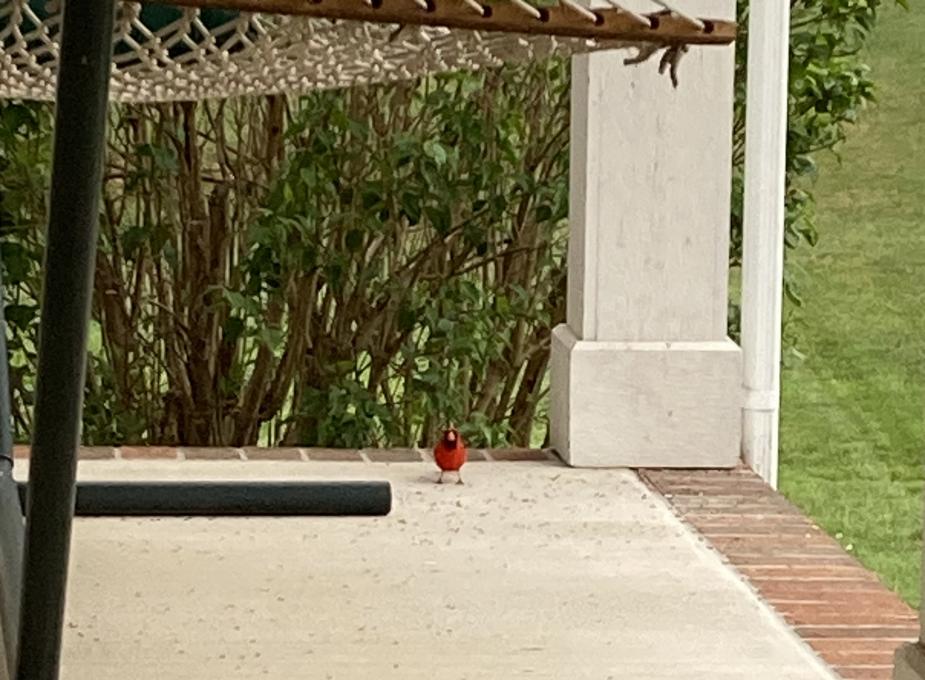Marjorie
Forum Replies Created
-
MarjorieParticipantI think it is really neat that hummingbirds wrap the outside of the nests with spider webs. I wonder if any other birds build the nest to expand as the babies grow? That was really interesting. I enjoyed the pictures of the various nests and found the one on the lock to be a most interesting location. Many male birds help in nest building and feeding of the young so one difference is that hummingbird females do all the work. In the past I have noticed that both male and female Robins gather the materials, but the female is the main nest builder. Both Robin parents help feed the young. With cardinals the male seems to gather the materials while the female builds. When she is nesting the male brings her food but he does not seem to help with the eggs. They both help care for the babies once hatched. As for Eastern bluebirds the male brings the nesting materials and sits on the nest box while she works on the nest. (I guess to keep watch and protect the nest). The female builds the nest and sits on the eggs. Both bluebird parents feed the young. The male hummingbird makes a showy display to attract a mate but then does not participate in any of these activities.in reply to: Life of a Hummingbird #976405
-
MarjorieParticipantI was surprised to learn how long the tongue of a hummingbird is in relation to the beak. I knew they had long beaks but was surprised to see the visuals that show how the tongue works and the length as well as how it is positioned inside the head of the hummingbird. That was fascinating.in reply to: How Hummingbirds Rule the Nectar World #976090
-
MarjorieParticipantI have the Ruby Throated Hummingbirds that visit my yard here in Southern Ohio. I see more females at my feeders than males but put this little swing between 2 feeders and was able to get a picture of this little guy the other day.
 in reply to: What Makes a Hummingbird a Hummingbird #975604
in reply to: What Makes a Hummingbird a Hummingbird #975604 -
MarjorieParticipantActivity 4: I want to start tracking the birds that I see. I plan to use the ebird app. I hope to take part in the Christmas Bird Count this year. This course has inspired me to take additional courses, get my binoculars out more often and to listen with intent to learn the bird sounds in my area so I know who is nearby. I have always enjoyed birds but now I want to KNOW them better. Thank you.in reply to: Activities: Helping Birds in Your World #961267
-
MarjorieParticipantActivity 3: I am noticing that we have some Eagles nesting in our part of Southern Ohio now. For years we did not see any at all so that is a good sign. A few years ago I heard that the bluebirds were scarce and we were asked to help. Several people (myself included) have put up nesting boxes to lure them back and give them a safe place to raise their young. Of course, sometimes other birds use the boxes but that is ok too. Below is a picture of one of the 20 nesting boxes recently installed at our local lake / State park that we often visit. I will be checking these for nest activity this spring and summer.
 in reply to: Activities: Helping Birds in Your World #961266
in reply to: Activities: Helping Birds in Your World #961266 -
MarjorieParticipantActivity 2: I do try to plant native plants and I hang suncatchers on my large windows to help birds realize it is a window and not a space for flying. I plan to read the other tips mentioned for window safety. I do not use pesticides. I will try to reduce my use of plastic and I did not even know about seeking out shade grown coffee. I will put that on my list to research as well. So much to learn yet it is good to know that small changes can have an impact if we all do our part.in reply to: Activities: Helping Birds in Your World #961263
-
MarjorieParticipantActivity 1: I love to watch birds. I find it relaxing to sit and listen to their calls and songs. I appreciate those who eat bugs (especially mosquitos) and those who drop seeds or pollinate flowers. We have a lot of Turkey Vultures around and I always found them ugly and did not like seeing them attack road kill. However, I had not thought of what a good job they were doing to clean up the environment and keep germs away from other species and humans. I was interested to learn about all the good they do and I will look upon them more fondly in the future.in reply to: Activities: Helping Birds in Your World #961262
-
MarjorieParticipantActivity 2: I have not yet been able to find a birding club in my area of Southern Ohio but I did find several lists of birding hotspots not too far away. I also saw an ad for a bird watch / hike coming up at a state park about an hour away. If I am able to join the event I will probably meet some local bird watchers who may have more information for me.in reply to: Activities: Keeping Track of Your Birdwatching #961178
-
MarjorieParticipantActivity 1: I have always loved watching birds but have never kept track of my sightings in written or electronic form. Since starting this course, I have been using Merlin Bird ID on my phone. The other day on a ride near a small lake I also tried out ebird to help identify birds by features. It really helped to see which birds would be expected to be at my location. I spotted several common birds and even one that showed up as less common in my area. I did not dare submit my data in case I did it wrong but I really want to in the future. During this lesson I clicked the link and signed up for the ebird free course. After I complete that I will become a full member of the group and be more confident in sharing what I see / hear. I also look forward to watching my own birding list grow on the ebird app and using a hand written checklist for the first time.in reply to: Activities: Keeping Track of Your Birdwatching #961177
-
MarjorieParticipantActivity 2: When reviewing the Roger Road and Mt. Lemmon ebird hotspots I noticed that Roger Road attracts Northern Shoveler, various ducks including Mallard and Ruddy and herons such as the Great Blue Heron and Black Crowned Night Heron. This indicates a wetland habitat. Mt. Lemon is more mountainous and therefore the home to hawks and owls who can soar higher and nest far above other species such as those visiting Roger Road. Both habitats attract far more species than I expected to find in one area.in reply to: Activities: Exploring Bird Habitats #960611
-
MarjorieParticipantlocation were a local wetlands area and a tree lined country road near open fields. At the wetlands this week I was able to spot a wading bird. I used the bird identify questions and am pretty sure it was a female blue heron. She was not as tall as expected but using binoculars I thought perhaps she was sitting on a nest. I took a couple of picture but they are from a distance. I will post them below. I read that some herons nest in trees and some in the marshy area if they feel it is safe. This heron was the only bird I saw that evening. In the past we have seen ducks and geese in these wetlands but not this time. On my country walk one afternoon this week I spotted red-winged black birds in the field, northern cardinals in the trees and many of Purple Martins at a Martin house our Amish neighbors installed. These are two of the different habitats in my local area.

 in reply to: Activities: Exploring Bird Habitats #960610
in reply to: Activities: Exploring Bird Habitats #960610 -
MarjorieParticipantActivity 3: I have been watching and listening for birds on my daily walks/ I have been studying the sounds of birds in my area and was so happy today to realize I correctly identified the call of the Red Winged Blackbird. As I was walking along, I heard a call I had studied this week and said to myself, It’s a Red Winged Blackbird. So, I stood still and waited and then he was kind enough to flyby so I could see him. It made me happy that I remembered which sound was his.in reply to: Activities: Noticing Behaviors #959688
-
MarjorieParticipantActivity 2: I have several different feeders to accommodate the “regulars” that stop by my yard. I notice that the Mourning Doves often feed from the seeds on the ground under the feeder in the yard. The Downy Woodpecker hangs out by the suet feeder. He sits there for a good amount of time before flying off. The Cardinals eat seeds patiently from the feeder on my porch and then if chased away they come back to clean up the seeds that spilled onto the cement floor of the porch. They hop along and get as much as they can from the ground as if not wanting it to go to waste. Blue Jays and Grackles are a bit aggressive to watch as they swoop in, grab and go. They often scare other birds away. Finches like the small holed bag I fill with Nyjer seed. They hang on the bag and eat from there since the bigger birds can’t get their beaks into the little holes. Robins dig around on the ground for worms and Hummingbirds sip nectar with their long beaks. They are also very possessive of the feeders and don’t share very well.in reply to: Activities: Noticing Behaviors #959687
-
MarjorieParticipantActivity 1: I observed the tree swallow for about 20 minutes. He was staking his claim on one of the bird boxes in my yard. He was showing territorial behavior to other swallows as well as to some sparrows who stopped by to check out the box. He would sit atop my flagpole and watch the box. If other birds came by he would swoop down and ask them to leave. I thought I noticed it swooping and catching insects and then I read the guide and found out that is one of their behaviors.in reply to: Activities: Noticing Behaviors #959686
-
MarjorieParticipantActivity 4: I have had feeders for several years but I am still new to birding as a hobby and mostly watch from my back yard or a wetland area a short drive away. I hope to get out and find a new birding location this spring / summer and if I do I will definitely visit again 6 months later to notice the difference. For now the main difference that I notice is the spring return of the hummingbirds, bluebirds and robins since these birds were not in my area all winter.in reply to: Activities: Different Seasons, Different Birds #959316
-
MarjorieParticipantActivity 3: I love the way the goldfinches change color – especially the male goldfinch who gets so bold in the summer with his bright yellow color. He is dull and kind of drab in winter and I don’t usually notice him (if he is even here) but as spring comes he gradually starts getting brighter and brighter. It is a wonderful site that I look forward to each year. I love to see the bright finches feasting on sunflowers planted in a field not too far away.in reply to: Activities: Different Seasons, Different Birds #959315
-
MarjorieParticipantActivity 2: Three birds that are year round residents in my area are: Mourning Dove (I live their cooing song), Downy Woodpecker (I was able to photograph one today nibbling on suet balls - see attached picture) and American Goldfinch (Harder to notice in winter due to dull color but so pretty in spring and summer).
 Three that live in my area for part of the year are: Purple Martin, Eastern Bluebird (My husband installed 4 bluebird nesting boxes – I hope they choose my yard to nest in this year), and Red-Winged Blackbirds (fun to see on fence posts or telephone wires as I take my walks on our country road) in reply to: Activities: Different Seasons, Different Birds #959312
Three that live in my area for part of the year are: Purple Martin, Eastern Bluebird (My husband installed 4 bluebird nesting boxes – I hope they choose my yard to nest in this year), and Red-Winged Blackbirds (fun to see on fence posts or telephone wires as I take my walks on our country road) in reply to: Activities: Different Seasons, Different Birds #959312 -
MarjorieParticipantActivity 1: To be honest, I had a little trouble navigating the animated trend maps. I was finally able to view the Ruby throated Hummingbird but could not pull up the Rufous Hummingbird for a comparison. Until looking at the list and pictures on the ebird link I did not realize there were quite that many different kinds of hummingbirds in our world. What amazing creatures! Hummingbirds begin to return to my areas in Southern Ohio in mid-April and stay until mid-September. I hung my feeders out today and made my first batch of food for the season. I enjoy watching them all spring and summer. I will revisit the trend map to view more species soon.in reply to: Activities: Different Seasons, Different Birds #959310
-
MarjorieParticipantActivity 3: The five birds I learned about this week that pass through my area that I didn’t know were near but would love to see are: Yellow-Cedar Waxwing (listed as rare but I’d love to see one), Yellow-billed cuckoo, Eastern Phoebe and two I’d like to find in a wetland area a short drive away would be: Great Blue Heron and a Common Loon (rare but may pass this way). I will be on the lookout and hope I spot some of these this spring.in reply to: Activities: Local Bird Exploration #958902
-
MarjorieParticipantActivity 2: It was great to use Merlin’s “Most Likely” species feature. I was so pleased they have the birds picture as well as various bird songs and calls. I was on my porch so was not close enough to make a recording of any but when I heard one I was able to listen to a couple possibilities and identify the correct bird to match what I heard. This will really help with my goal to know what birds in my area I am hearing. For example. I see Cardinals often but did not know for sure what their sound was. One learned . . . hundreds to go!
 in reply to: Activities: Local Bird Exploration #958901
in reply to: Activities: Local Bird Exploration #958901
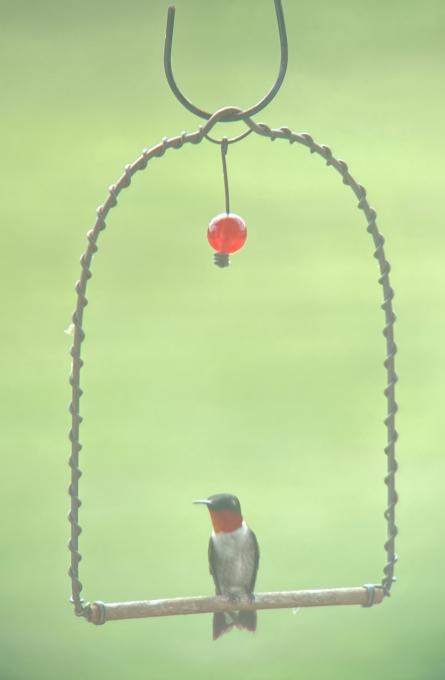
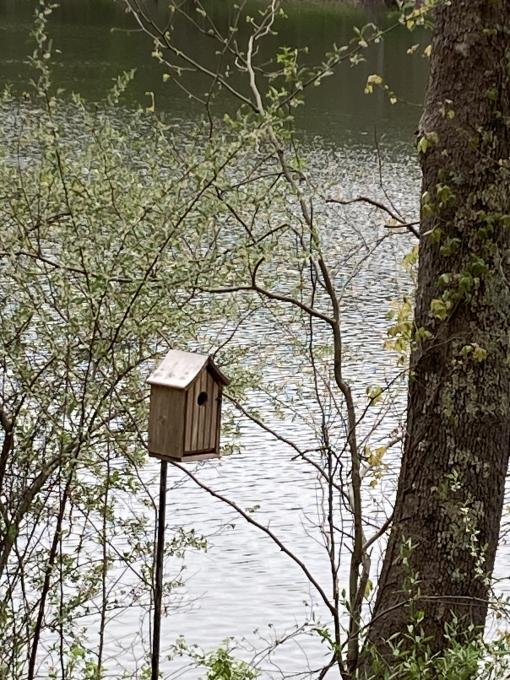
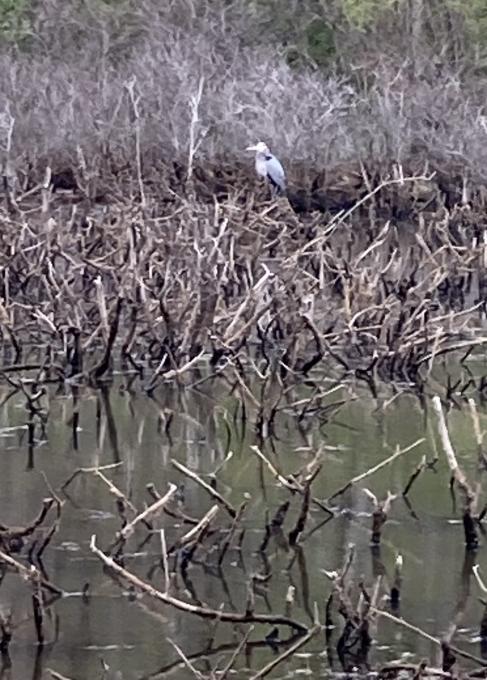
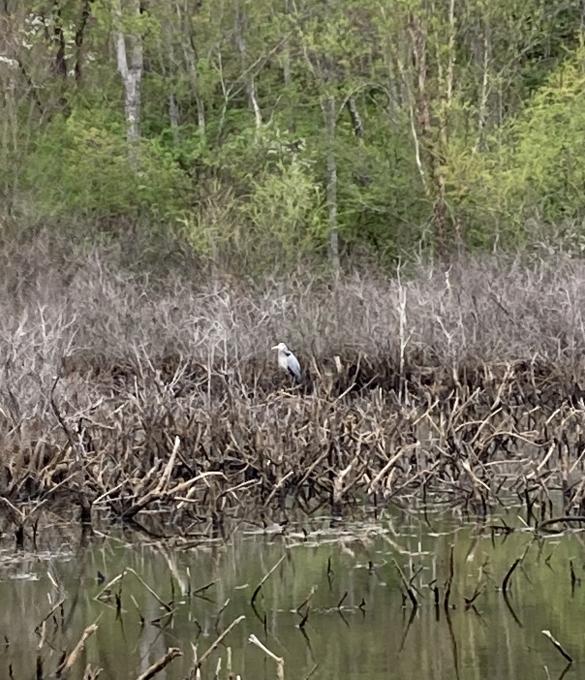
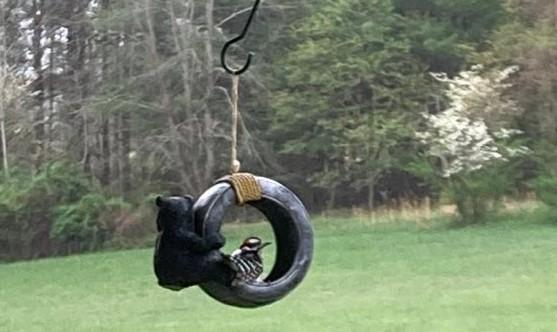 Three that live in my area for part of the year are: Purple Martin, Eastern Bluebird (My husband installed 4 bluebird nesting boxes – I hope they choose my yard to nest in this year), and Red-Winged Blackbirds (fun to see on fence posts or telephone wires as I take my walks on our country road)
Three that live in my area for part of the year are: Purple Martin, Eastern Bluebird (My husband installed 4 bluebird nesting boxes – I hope they choose my yard to nest in this year), and Red-Winged Blackbirds (fun to see on fence posts or telephone wires as I take my walks on our country road) 